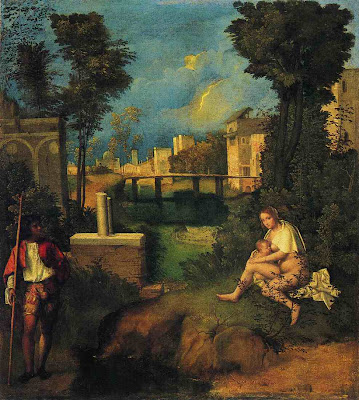

 Caravaggio and Carracci, both influential during the Baroque era, were commissioned by Tiberio Cerasi in the Cerasi Chapel of Santa Maria del Popolo. One can say that the two artists went head to head, competing against one another to produce the “better” work of art in the Chapel.
Caravaggio and Carracci, both influential during the Baroque era, were commissioned by Tiberio Cerasi in the Cerasi Chapel of Santa Maria del Popolo. One can say that the two artists went head to head, competing against one another to produce the “better” work of art in the Chapel. Carracci ends up painting the Assumption of the Virgin (1600-1601) in the central alterpiece flanked by Caravaggio’s Conversion on the Way to Damascus (1601) and the Crucifixion of St. Peter (1601). There is a stark contrast between the works of the two painters. Carracci’s painting can be seen as classical baroque as brighter colors are used and the human forms are idealized and simplified. Caravaggio’s paintings are the opposite. It is much darker and the forms are much more realistic as the figures were drawn directly from life. However, both paintings are equally dramatic. Both convey a moment of high drama frozen in time and both serve as a way to promote Catholicism.
Though both works are breathtaking, one cannot help but admit that Carracci’s Assumption of the Virgin is slightly awkward. Realism seems to be sacrificed for the drama and color as it almost seems that the Virgin could not fit into composition. Ultimately it is overshadowed by Caravaggio’s much revered paintings of the Conversion on the Way to Damascus and the Crucifixion of St. Peter. As already mentioned, Caravaggio painted from life and his works are clearly darker. Through his painting of the Conversion on the Way to Damascus Caravaggio’s opinion of Carracci’s work is expressed. It can be seen that the horse’s backside is facing towards the direction of the Assumption of the Virgin. There is also an unsettling feeling as one of the front legs seems to almost trample Paul. This work depicts the moment in Acts (chapter 9) where Saul (Paul) falls off his horse and beholds a heavenly light. But there is no heavenly light depicted here. Directly opposite this painting is the Crucifixion of St. Peter. Caravaggio’s ability to convey motion in something that is forever frozen is clearly seen here. There is a sort of anticipation of what is going to happen next. This event is very close to the citizens as the crucifixion took place in Rome. The rock on the ground symbolizes St. Peter as the rock on which the church was built.
Melissa Gaballa
















